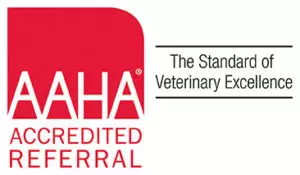Our Blog

A Lesson in Chinese Veterinary Medicine Terminology
Traditional Chinese Veterinary Medicine (TCVM) uses various therapies, such as acupuncture, diet, herbal therapy, and massage, to restore balance and harmony to a pet’s body and treat and prevent disease. TCVM is an adaptation and extension of Traditional Chinese Medicine (TCM), which is based on the concept that the body is a microcosm of the … Continue reading A Lesson in Chinese Veterinary Medicine Terminology
Category: Blog
Read more...

Motion Palpation and Veterinary Medical Manipulation
Orthopedic conditions are common in pets, but structural changes seen on X-rays and other imaging modalities often don’t correlate with the patient’s signs. When a pet’s joint range of motion is restricted, significant repercussions, including neck or back pain, lameness, organ dysfunction, and a reduced immune response, can result. Veterinarians qualified in motion palpation and … Continue reading Motion Palpation and Veterinary Medical Manipulation
Category: Blog
Read more...

Food Therapy
Hippocrates said, “Let food be thy medicine, and let medicine be thy food,” in 400 BC, indicating that for centuries people have realized nutrition was important to help prevent and cure disease. Food therapy is a component of Traditional Chinese Veterinary Medicine (TCVM) that uses specific foods and herbs to treat pets based on genetic … Continue reading Food Therapy
Category: Blog
Read more...

Does My Dog Need a Tracheal Stent?
Tracheal collapse is a common problem in small-breed dogs, and can lead to severe respiratory distress without appropriate treatment. In some cases, surgery is necessary to correct the problem and ensure the affected dog can breathe properly. Our team of internationally recognized veterinary surgical experts at Long Island Veterinary Specialists is able to perform this … Continue reading Does My Dog Need a Tracheal Stent?
Category: Blog
Read more...

How to Identify Hip Dysplasia in Dogs
Hip dysplasia is the abnormal growth and development of the hip joint. The hip joint is a “ball and socket” joint. The ball is the head of the femur. The socket is part of the pelvic bone, the acetabulum. Normally, the head of the femur fits very tightly within the acetabulum. In hip dysplasia, the joint does not fit together snugly, causing instability. As a result, the joint will partially subluxate or move in and out of the socket. This may cause cartilage damage and severe arthritis in dogs as early as one year of age.
Category: Blog
Read more...


